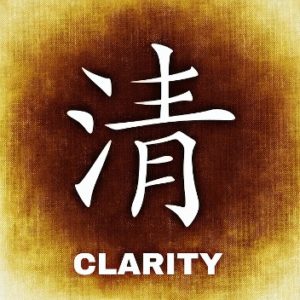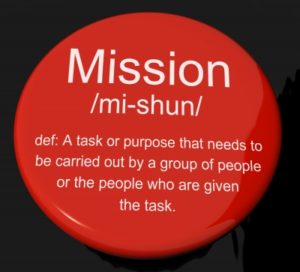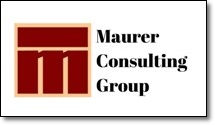‘Designing Strategies’ Newsletter
January – February, 2011 Volume 8 – Issue 38
 In a recent blog post, we addressed short, succinct mission statements and their importance to your business. It would be good to expand on that topic in this issue of Designing Strategies. A mission statement is the most important part of your business and strategic planning process.
In a recent blog post, we addressed short, succinct mission statements and their importance to your business. It would be good to expand on that topic in this issue of Designing Strategies. A mission statement is the most important part of your business and strategic planning process.
Mission statements define the reason that you are in business. Simple, right? Without one, you have no core, no center, no defining direction. In short, you do not have a clear grasp on what your business is all about. You won’t have a clear image of who your customers are. You will lack direction for what to do in order to achieve success, without this important filter.
It seems the larger the corporation, the longer and more detailed the mission statement becomes. Some run a page or more in length. They are often filled with industry and business jargon that most readers would not understand. Totally confused after the first paragraph, they stop reading. Their eyes glaze over and they let ‘Huh?’ slip out. Did they understand the mission of the company? Probably not. Did they care about the company’s mission? I doubt it.
For that matter, how many people in these large companies do you think ever see the mission statement? How many of their staff understand what it means in the execution of their jobs? Mission statements need to clearly explain what your company does and for whom. That’s it. It doesn’t need to say how you will accomplish your mission, what guidelines you will use or anything else. Nothing grandiose, just what you do and who you do it for.
If you can’t define your mission in a few words, you clearly don’t have a clue what your  business is about. A great example of a company that didn’t know what they were about is that old buggy whip manufacturer. Remember him? He made the finest buggy whips on the market, using the highest quality materials. They were a well constructed, high quality product, lasted a long time and were a great value for customers. Then, seemingly overnight, horseless carriages came on the scene and buggy whip sales dropped. It didn’t take long to realize that whipping a horseless carriage was a waste of time.
business is about. A great example of a company that didn’t know what they were about is that old buggy whip manufacturer. Remember him? He made the finest buggy whips on the market, using the highest quality materials. They were a well constructed, high quality product, lasted a long time and were a great value for customers. Then, seemingly overnight, horseless carriages came on the scene and buggy whip sales dropped. It didn’t take long to realize that whipping a horseless carriage was a waste of time.
Had he a better idea of the business he was in, and his eye on the future, the company might have survived. He thought of himself as being a success in the buggy whip industry. He should have understood he was really in the transportation industry. Necessary changes in his business could have been made as the transportation industry evolved around him. “We make high quality buggy whips”, as a mission statement certainly limited his outlook. Decisions made about the company and product line were totally limited to buggy whips. Horseless carriages came along and his company was not prepared for the change that would bury his business.
Everyone in the world knows of the Disney corporate empire. It is huge. We all grew up under their spell. Their vast holdings span the globe. The Disney corporation has a clear mission statement that is a bit more than 12 words: To be one of the world’s leading producers and providers of entertainment and information. That mission was coupled with one of the shortest, most clear Vision statements on record: To make people happy. That’s it, nothing more, nothing less. What they want to do (Vision) and how they plan to do it (Mission).
With those two brief, concise statements as his basis, look at what Walt Disney and his team achieved. Every plan, goal, objective and strategy was viewed through those two important filters. Their mission is to provide venues to make their customers happy – and be successful in the process. The mission happens everywhere: at one of their theme parks, one of their movies, shopping in a Disney retail store, playing with Disney character toys, or humming along to one of their songs. All decisions made in this enormous corporate entity are based on the happiness of their customers and making it happen.
If your company has a mission statement (of course you do have one) that is longer than 10-12 words, it’s time to start editing. Pare it down to a bare minimum. Trim the fat out of it. Cut out all that jargon that only you understand. Use words the average person will understand.
I’ve heard that marketing guru and author, Seth Godin, believes a mission statement should be no more than 8 words in length. I’m willing to go the extra few words. The idea is to have something short and concise enough to be easily remembered and communicated. “Communicated to whom?” you might ask.

freedigitalphotos.net | Stuart Miles
Communicate your mission to all of your company’s stakeholders. If just you, or you and couple of your leaders know the mission, it won’t be used optimally. Share it with your leadership team, staff, vendors, suppliers, customers, and investors. In short, everyone involved with your business should be aware of your mission. The more these stakeholders understand your mission statement the more they can help you achieve that mission. It will be easier for all of them to understand their particular place in your organization, or working with your organization, to help you achieve your mission.
If your company has a mission statement (and of course you do) that is longer than 10-12 words, start editing. Pare it down to a bare minimum. Trim the fat out of it. Cut out all that jargon that only you understand. Use words the average person will understand.
If you don’t have those key elements: Vision and Mission statements developed, now is the time. Even if you feel like you are taking a few steps backward, you need to do it. Those few steps will be the most important backtracking you ever take. In operating your small business, bounce every decision on the table off of that mission to be sure it is applicable to your big picture goals. Mission statements are one of the critical prisms through which you should view every plan and strategy to advance your company.
VISUALIZE — ANALYZE — STRATEGIZE
Direction for Your Small Business Through Vision and Mission Statements
Need help? Give Terri Maurer a call (330,330.0802) or send an email to set up an appointment to talk about your company and it’s mission. For more on our small business consulting services, visit our website.






